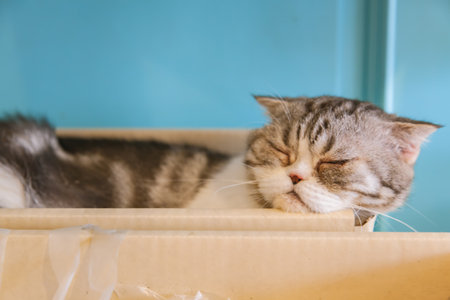1. Understanding Fresh and Processed Pet Food
When choosing the best diet for your small pet, its important to understand the difference between fresh and processed food. Each type has its own benefits and drawbacks, and knowing what goes into these foods can help you make informed decisions for your furry friend.
What Is Fresh Pet Food?
Fresh pet food is made from natural ingredients with minimal processing. It often includes whole meats, vegetables, and fruits, without artificial preservatives or additives. These foods are typically refrigerated or frozen to maintain their quality and nutritional value.
Common Ingredients in Fresh Pet Food
- Real meats like chicken, beef, or fish
- Fresh vegetables such as carrots, peas, and spinach
- Whole grains like brown rice or quinoa
- Natural oils for healthy fats
- No artificial colors, flavors, or preservatives
What Is Processed Pet Food?
Processed pet food undergoes various manufacturing steps to enhance shelf life and convenience. This category includes kibble, canned food, and freeze-dried meals. While some processed foods contain high-quality ingredients, others may include fillers and artificial additives.
Common Processing Methods
- Kibble: Cooked at high temperatures and then dried into small pellets.
- Canned Food: Sealed in airtight containers and cooked under pressure for preservation.
- Freeze-Dried: Moisture is removed while retaining most nutrients.
- Dehydrated: Slowly dried at low temperatures to preserve nutrients.
Comparison of Fresh vs. Processed Pet Food
| Aspect | Fresh Pet Food | Processed Pet Food |
|---|---|---|
| Nutritional Value | Higher in natural nutrients | Nutrients may be lost during processing |
| Shelf Life | Shorter; requires refrigeration or freezing | Longer; can be stored at room temperature |
| Additives & Preservatives | No artificial preservatives; minimal additives | May contain artificial preservatives and fillers |
| Convenience | Requires preparation and storage considerations | Easier to store and serve |
| Cost | Tends to be more expensive due to fresh ingredients | More affordable due to mass production |
The choice between fresh and processed pet food depends on your pet’s specific needs, your budget, and your lifestyle. Understanding the differences between these options will help you provide the best nutrition possible for your small pet.
Nutritional Benefits of Fresh Food
When it comes to feeding your small pet, fresh food offers numerous health benefits that processed food simply can’t match. From better digestion to higher nutrient content, incorporating fresh ingredients into your pet’s diet can significantly improve their overall well-being.
Improved Digestion
Fresh food is easier for small pets to digest compared to processed options. Many commercial pet foods contain fillers and artificial additives that can be difficult for your pet’s digestive system to process. Fresh ingredients, such as leafy greens, fruits, and lean proteins, provide natural fiber and enzymes that promote a healthy gut.
Higher Nutrient Content
One of the biggest advantages of fresh food is its superior nutrient content. Processing often strips food of essential vitamins and minerals, which are then replaced with synthetic additives. By offering fresh ingredients, you ensure your pet gets all the natural nutrients they need for optimal health.
| Nutrient | Fresh Food Source | Processed Food Alternative |
|---|---|---|
| Vitamin C | Fresh bell peppers, oranges | Synthetic vitamin supplements |
| Fiber | Kale, carrots, apples | Additives like cellulose powder |
| Protein | Cooked chicken, eggs | Processed meat by-products |
Reduced Additives and Preservatives
A major downside of processed pet food is the presence of artificial preservatives, colorants, and flavor enhancers. These additives can contribute to long-term health issues in small pets. Fresh food eliminates unnecessary chemicals and provides a more natural diet that supports better overall health.
Avoiding Harmful Ingredients
Certain preservatives found in processed pet foods have been linked to allergies and digestive problems. By choosing fresh ingredients, you minimize your pet’s exposure to these harmful substances and support their long-term well-being.
![]()
3. Convenience and Shelf Life of Processed Food
One of the biggest advantages of processed pet food is its convenience. Unlike fresh food, which requires regular preparation and careful storage, processed food is designed to be easy to store, serve, and maintain. Whether you have a busy schedule or need a long-term feeding solution, processed food offers practical benefits that make pet care simpler.
Longer Shelf Life
Processed pet foods are made to last much longer than fresh foods. They often contain preservatives and are packaged in a way that prevents spoilage. This means you can buy in bulk without worrying about the food going bad quickly.
| Food Type | Shelf Life | Storage Requirements |
|---|---|---|
| Fresh Food | A few days to a week | Refrigeration or freezing required |
| Canned Food | Months to years (unopened) | Cool, dry place; refrigerate after opening |
| Kibble/Dry Food | Several months to over a year | Airtight container in a dry place |
Ease of Use
If you’re always on the go, processed food makes feeding your small pet quick and hassle-free. There’s no need for chopping, cooking, or balancing nutrients—everything is pre-measured and formulated for their dietary needs.
No Daily Prep Needed
Kibble and canned foods come ready to serve, saving time and effort compared to fresh diets that require daily portioning and meal planning.
Lesser Risk of Spoilage
You don’t have to worry about food going bad as quickly as fresh ingredients. Properly stored processed food stays safe for consumption for extended periods.
Affordability and Budget-Friendly Options
Processed pet food is generally more budget-friendly compared to maintaining a completely fresh diet. Buying in bulk often saves money, and there’s less waste since it doesn’t spoil as quickly.
If you’re looking for a convenient and cost-effective way to keep your small pet well-fed, processed food provides an easy solution with minimal effort while ensuring their nutritional needs are met.
4. Potential Risks and Concerns
When choosing between fresh and processed food for your small pet, its important to consider the potential risks that come with each option. While both types of food have their benefits, they also come with concerns such as spoilage, preservatives, and nutritional imbalances.
Spoilage Risks
Fresh food can provide great nutrition, but it also has a shorter shelf life compared to processed food. This means it can spoil quickly if not stored properly. Spoiled food can lead to digestive issues or even serious illnesses in small pets.
How to Reduce Spoilage Risk:
- Store fresh food in airtight containers in the refrigerator.
- Only serve the amount your pet can eat in one sitting.
- Regularly check for signs of mold or bad odors before feeding.
Preservatives in Processed Food
Processed pet foods often contain preservatives to extend shelf life. While some preservatives are safe, others may cause health concerns over time. Some artificial additives have been linked to allergies or digestive sensitivities in certain pets.
Common Preservatives and Their Effects:
| Preservative | Purpose | Potential Concerns |
|---|---|---|
| BHA & BHT | Prevent fat spoilage | Possible links to long-term health issues |
| Sodium Nitrate | Keeps meat looking fresh | Might contribute to digestive problems |
| Naturally sourced Vitamin E (Tocopherols) | A natural preservative alternative | No known negative effects when used in moderation |
Nutritional Imbalances
A major concern with both fresh and processed diets is ensuring they provide balanced nutrition. Fresh food may lack essential vitamins or minerals if not properly planned, while processed food can sometimes contain excessive fillers or low-quality ingredients.
Avoiding Nutritional Issues:
- If feeding fresh food, consult a vet for a balanced diet plan.
- Select high-quality processed foods with real ingredients and minimal fillers.
- Avoid relying on just one type of food—mixing fresh and processed options may help balance nutrients.
No matter what you choose, always monitor your pet’s health and adjust their diet as needed. Understanding the potential risks allows you to make informed decisions that keep your small pet happy and healthy.
5. Choosing the Best Diet for Your Small Pet
Selecting the right diet for your small pet can be overwhelming, but understanding their specific needs will help you make the best choice. Factors such as species, age, and dietary preferences play a crucial role in ensuring they get the proper nutrition.
Understanding Your Pet’s Nutritional Needs
Different small pets have different dietary requirements. Some thrive on fresh foods, while others need processed diets for balanced nutrition. Here’s a quick guide to common small pets and their ideal diets:
| Pet Type | Recommended Diet | Notes |
|---|---|---|
| Rabbits | Fresh hay, leafy greens, limited pellets | Avoid sugary fruits and high-carb treats |
| Guinea Pigs | Vitamin C-rich veggies, hay, pellets | Cannot produce Vitamin C on their own |
| Hamsters | A mix of seeds, grains, fresh veggies | Avoid citrus fruits and sugary treats |
| Ferrets | High-protein meat-based diet | No fruits or vegetables; strict carnivores |
| Turtles | A mix of greens, insects, and pellets | Diets vary by species (herbivore vs. omnivore) |
Tips for Selecting a Balanced Diet
#1 Consider Your Pets Age and Activity Level
Younger pets often need more protein and fat to support growth, while older pets may require lower-calorie diets to maintain a healthy weight.
#2 Balance Fresh and Processed Foods
If possible, incorporate fresh foods into your pets diet while using high-quality processed options to fill any nutritional gaps.
#3 Monitor Their Preferences and Health Reactions
Your pet may have specific likes and dislikes. Introduce new foods gradually and observe any changes in energy levels, digestion, or coat health.
#4 Avoid Harmful Ingredients
Certain foods can be toxic to small pets. For example, chocolate, onions, and garlic are harmful to many animals. Always research before introducing new foods.
#5 Consult with a Veterinarian if Unsure
If youre unsure about what diet is best for your pet, consult with an exotic pet veterinarian who can provide guidance tailored to their specific needs.


